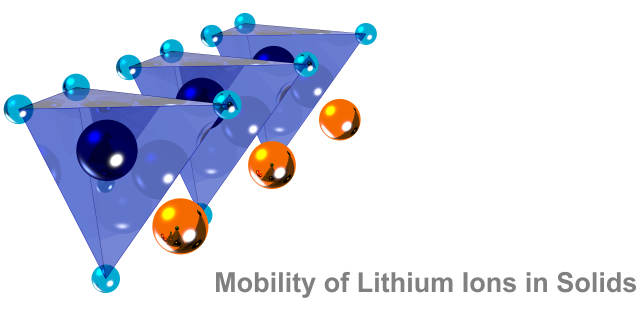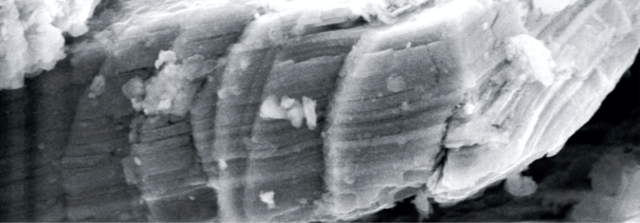
DFG Research Unit molife
The molife project, which is funded by the Deutsche Forschungsgemeinschaft (DFG) is dedicated to basic studies of atomic dynamic and kinetic processes in Li-containing solids, that is model substances with partly application-oriented character.
Molife comprises seven projects with different, but complementary main focuses. These are ranging from dimensionality and isotopic effects in Li diffusion via structurally disordered or nanostructured solids to the study of extremely slow ionic movements. For these aims a wide range of methods, which are unique in this combination, is used. This includes, e.g., the mass tracer method, impedance and conductivity spectroscopy, numerous nuclear magnetic resonance (NMR) techniques as well as neutron reflectrometry and neutron diffractometry. Within the framework of FOR 1277 the DFG has funded two new large instruments: a solid state NMR spectrometer and an impedance spectrometer, both are hosted at the TU Graz (Wilkening group).
Due to the use of complementary micro- and macroscopic measurement techniques, atomic motion processes can be studied over very large time and length scales, so that, for example, Li jump rates can be recorded from the sub-Hz up to the GHz range. Theoretical studies involving particular quantum chemical calculations and Monte Carlo simulations accompany the experimentally based projects. Model substances and materials include among others 1D- und 2D- ion conductors, nanostructured materials (nanotubes and nanowires), glasses, strongly disordered oxides, etc.

For more information, pls see: DFG - GEPRIS - FOR 1277: Mobilität von Lithiumionen in Festkörpern (molife)
Further reading, recent papers:
Ultra-slow Li ion jump diffusion in Li2SnO3 studied by two-time Li spin-alignment echo NMR and Li NMR relaxometry, J. Langer, M. Wilkening, Solid State Ion. 293 (2016) 85.
Discriminating the Mobile Ions from the Immobile Ones in Li4+xTi5O12: 6Li NMR Reveals the Li+ Diffusion Pathway and Proposes a Refined Lithiation Mechanism, W. Schmidt and M. Wilkening, J. Phys. Chem. C 120 (2016) 11372.
Electrochemical preparation of tin–titania nanocomposite arrays
D. Prutsch, M. Wilkening, I. Hanzu, RSC Adv. 6 (2016) 98243.

In the FOR 1277 a number of spectroscopic and spectrometric methods are available that are operated collectively under the responsibility of individual subprojects, see the official webpage of molife:
Nuclear magnetic resonance
- NMR spin-lattice relaxation in the laboratory System (varying both frequency and temperature)
- NMR spin-lattice relaxation in the rotating Frame of reference
- Field gradient NMR (as well as static Gradient NMR)
- Spin-spin relaxation NMR (line shape analysis), one- and multidimensional MAS-NMR experiments
- Multi-time stimulated echo (spin-alignment) NMR methods (spin-3/2 and spin-1 nuclei)
Impedance- and conductivity spectroscopy
- DC solid-state impedance spectroscopy
- AC solid-state impedance spectroscopy
Electrochemical methods
- Cyclic voltammetry, chronoamperometry
Institut für Chemische Technologie von Materialien Stremayrgasse 9
A-8010 Graz - Austria
Head of the Projects
Univ.-Prof. Dr. Martin Wilkening
Dr. Ilie Hanzu http://www.lithium.tugraz.at

